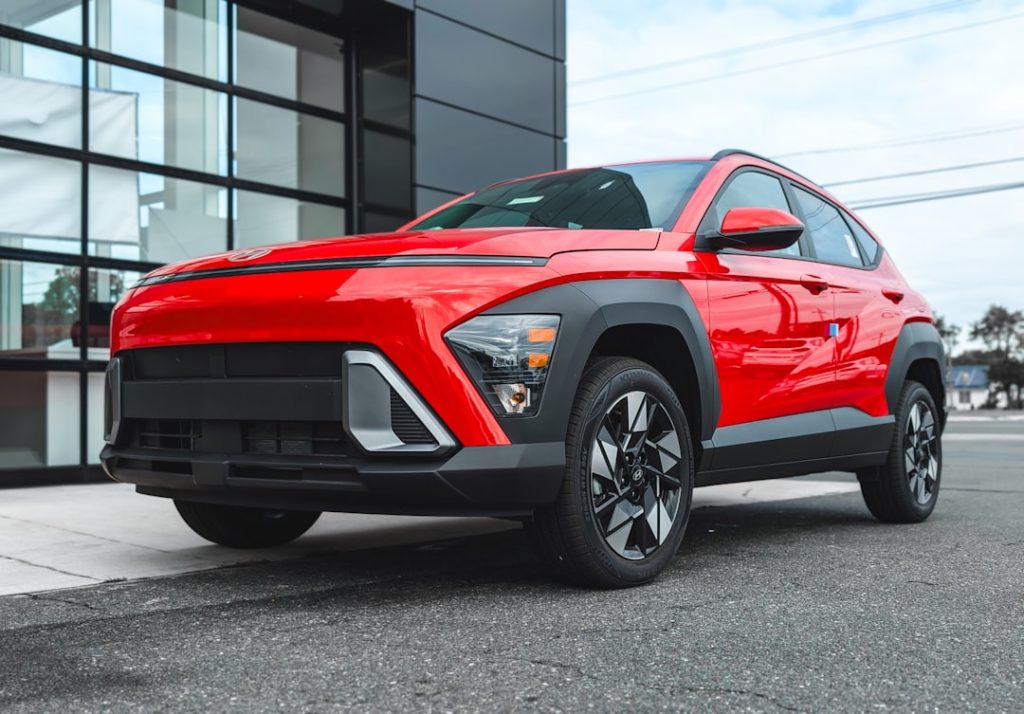Automotive advertising wields significant influence over consumer behavior, shaping perceptions and driving purchasing decisions. The persuasive power of these ads lies in their ability to evoke emotions, create aspirational narratives, and establish brand loyalty. For instance, a well-crafted advertisement can transform a mundane vehicle into a symbol of freedom and adventure, appealing to consumers’ desires for exploration and self-expression.
By leveraging storytelling techniques, automotive brands can connect with potential buyers on a deeper level, making them more likely to consider a particular model when it comes time to make a purchase. Moreover, the strategic use of psychological triggers in automotive ads plays a crucial role in influencing consumer behavior. Advertisers often employ techniques such as scarcity, social proof, and authority to enhance the appeal of their vehicles.
For example, limited-time offers or exclusive models can create a sense of urgency, prompting consumers to act quickly. Similarly, showcasing testimonials from satisfied customers or endorsements from industry experts can build trust and credibility, further persuading potential buyers. As consumers navigate an increasingly crowded marketplace, the effectiveness of automotive ads in shaping their choices cannot be overstated.
Key Takeaways
- Automotive ads have a powerful influence on consumer behavior, shaping perceptions and driving purchasing decisions.
- Crafting sleek and stylish ads is an art that requires a deep understanding of the target audience and the ability to evoke emotion and desire.
- The evolution of automotive advertising from print to digital has revolutionized the industry, allowing for more targeted and interactive campaigns.
- Automotive ads play a crucial role in driving sales and boosting revenue for car dealerships, especially when they effectively highlight the unique selling points of a vehicle.
- Analyzing the effectiveness of automotive ads is essential for understanding their impact and optimizing future marketing strategies.
Sleek and Stylish: The Art of Crafting Compelling Automotive Ads
Creating compelling automotive ads requires a delicate balance of aesthetics and messaging. The visual elements of an advertisement—such as color schemes, typography, and imagery—play a pivotal role in capturing attention and conveying the brand’s identity. A sleek design can evoke feelings of luxury and sophistication, while bold colors may suggest excitement and adventure.
For instance, brands like BMW and Mercedes-Benz often utilize minimalist designs that emphasize elegance and performance, appealing to consumers who value refinement in their automotive choices. In addition to visual appeal, the narrative woven into automotive ads is equally important. Crafting a compelling story that resonates with the target audience can elevate an ad from mere promotion to an emotional experience.
For example, Subaru’s “Love” campaign focuses on the bond between families and their vehicles, highlighting themes of safety and reliability. This approach not only showcases the product but also fosters an emotional connection with consumers, making them more likely to choose Subaru when considering their next vehicle purchase.
From Print to Digital: The Evolution of Automotive Advertising

The landscape of automotive advertising has undergone a dramatic transformation over the past few decades, shifting from traditional print media to dynamic digital platforms. In the past, car manufacturers relied heavily on print advertisements in magazines and newspapers, as well as television commercials, to reach potential buyers. These methods often had limitations in terms of audience targeting and engagement.
However, the advent of digital technology has revolutionized how automotive brands communicate with consumers. Today, digital advertising allows for highly targeted campaigns that can reach specific demographics based on interests, behaviors, and online activity. Social media platforms like Instagram and Facebook have become essential tools for automotive brands to showcase their vehicles through visually engaging content.
For instance, brands can leverage user-generated content by encouraging customers to share their experiences with their vehicles, creating a sense of community and authenticity around the brand. Additionally, interactive ads that incorporate augmented reality (AR) or virtual reality (VR) enable consumers to experience vehicles in immersive ways, further enhancing engagement and interest.
Driving Sales: How Automotive Ads Boost Revenue for Car Dealerships
| Metrics | Definition |
|---|---|
| Impressions | The number of times an ad is viewed |
| Click-through rate (CTR) | The percentage of people who click on an ad after seeing it |
| Conversion rate | The percentage of ad viewers who take a desired action, such as making a purchase |
| Return on investment (ROI) | The ratio of net profit to the cost of the investment |
| Cost per acquisition (CPA) | The cost of acquiring a new customer through advertising |
Automotive ads are not just about brand awareness; they play a critical role in driving sales for car dealerships. Effective advertising campaigns can significantly impact foot traffic to dealerships and online inquiries about specific models. For instance, targeted promotions highlighting seasonal sales or special financing options can entice potential buyers to visit a dealership or explore online inventory.
By creating a sense of urgency through limited-time offers or exclusive deals, automotive ads can motivate consumers to make purchasing decisions more quickly. Moreover, the integration of data analytics into automotive advertising strategies has allowed dealerships to refine their approaches based on consumer behavior insights. By analyzing metrics such as click-through rates, conversion rates, and customer demographics, dealerships can tailor their advertising efforts to maximize effectiveness.
For example, if data indicates that a particular demographic is responding well to ads featuring eco-friendly vehicles, dealerships can adjust their marketing strategies accordingly to focus on promoting hybrid or electric models. This data-driven approach not only enhances the efficiency of advertising campaigns but also contributes to increased revenue generation.
The Science of Marketing: Analyzing the Effectiveness of Automotive Ads
Understanding the effectiveness of automotive ads requires a blend of creativity and analytical rigor. Marketers employ various metrics to assess how well their campaigns resonate with consumers and drive desired outcomes. Key performance indicators (KPIs) such as return on investment (ROI), customer acquisition cost (CAC), and engagement rates provide valuable insights into the success of advertising efforts.
For instance, a high ROI indicates that an ad campaign is effectively converting viewers into customers, while low engagement rates may signal a need for reevaluation of messaging or targeting strategies. Additionally, A/B testing has become a common practice in the automotive advertising industry. By comparing two variations of an ad—such as different headlines or visuals—marketers can determine which version performs better among their target audience.
This iterative process allows brands to refine their messaging continuously and optimize their advertising strategies for maximum impact. Furthermore, consumer feedback through surveys or social media interactions can provide qualitative insights that complement quantitative data, offering a holistic view of how automotive ads are perceived by potential buyers.
Revving Up the Competition: How Automotive Ads Set Brands Apart

In an industry characterized by fierce competition, automotive ads serve as a vital tool for brands to differentiate themselves from one another. With numerous manufacturers vying for consumer attention, effective advertising can create a unique brand identity that resonates with target audiences. For example, Tesla has positioned itself as an innovator in the electric vehicle market through its bold advertising strategies that emphasize sustainability and cutting-edge technology.
This distinct positioning not only attracts environmentally conscious consumers but also sets Tesla apart from traditional automakers. Moreover, automotive ads often highlight unique selling propositions (USPs) that distinguish one brand from another. Whether it’s superior safety features, advanced technology integration, or exceptional performance capabilities, these USPs are crucial in persuading consumers to choose one brand over another.
For instance, Volvo’s emphasis on safety has become synonymous with its brand identity, allowing it to carve out a niche in the market that appeals specifically to safety-conscious buyers. By effectively communicating these differentiators through advertising campaigns, automotive brands can enhance their competitive edge.
The Role of Creativity in Automotive Advertising: Thinking Outside the Box
Creativity is at the heart of successful automotive advertising campaigns. In an era where consumers are bombarded with countless advertisements daily, standing out requires innovative thinking and fresh ideas. Brands that embrace creativity often find unique ways to engage their audiences and leave lasting impressions.
For example, Honda’s “The Power of Dreams” campaign utilized imaginative storytelling to showcase the brand’s commitment to innovation and creativity across its product lineup. Additionally, unconventional advertising methods can capture consumer attention in unexpected ways. Guerrilla marketing tactics—such as pop-up events or interactive installations—can create buzz around a brand while fostering direct engagement with potential customers.
For instance, Audi once created an immersive experience at a major auto show where attendees could virtually test drive their latest models using VR technology. Such creative approaches not only generate excitement but also encourage word-of-mouth marketing as consumers share their experiences with friends and family.
Navigating the Road Ahead: Trends and Innovations in Automotive Advertising
As technology continues to evolve rapidly, so too does the landscape of automotive advertising. Emerging trends such as artificial intelligence (AI), machine learning, and data-driven marketing are reshaping how brands connect with consumers. AI-powered tools enable marketers to analyze vast amounts of data quickly, allowing for more precise targeting and personalized messaging.
For example, predictive analytics can help identify potential buyers based on their online behavior and preferences, enabling brands to tailor their advertising efforts accordingly. Furthermore, sustainability has become an increasingly important focus within automotive advertising as consumers become more environmentally conscious. Brands are now highlighting eco-friendly initiatives and electric vehicle offerings in their campaigns to align with consumer values.
This shift not only reflects changing consumer preferences but also positions brands as responsible corporate citizens committed to addressing climate change. In conclusion, the future of automotive advertising will likely be characterized by continued innovation and adaptation to evolving consumer expectations. As brands navigate this dynamic landscape, those that embrace creativity while leveraging data-driven insights will be best positioned to thrive in an increasingly competitive market.



